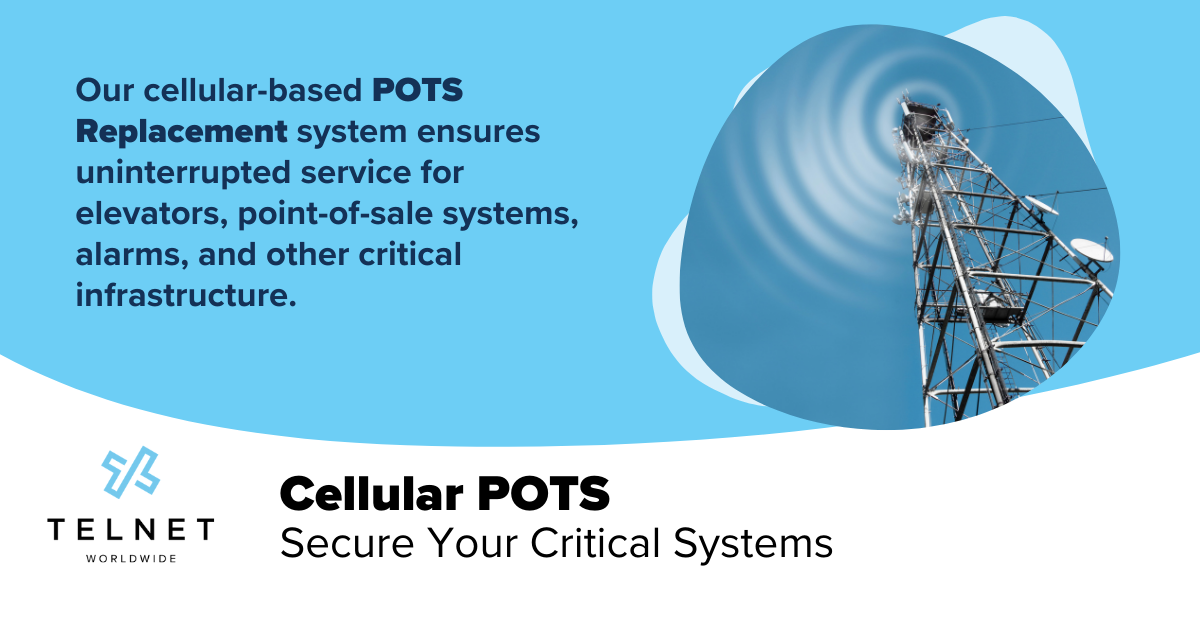Outdated phone systems and legacy technology hold back many organizations from operating efficiently in today’s digital world. Making the switch from on-premise to the cloud can seem daunting. But the change is doable. And necessary.
To shed light on the process, TelNet Worldwide hosted a panel discussion at the 2023 Merit Network Member Conference titled “The Journey from On-Premise to UCaaS.” TelNet Worldwide President Mark Iannuzzi moderated and was joined by four panelists.
'The Journey from On-Premise to UCaaS' Panel

President
TelNet Worldwide
- Moderator -

IS Director
Northeast Michigan Community Mental Health Authority

System Administrator
Northeast Michigan Community Mental Health Authority

Technology Director
University of Michigan

Consultant
Ferris State University
“Been There, Done That” Recommendations for Migrating to the Cloud
The four Merit Conference 2023 panelists all have firsthand experience transitioning phone systems from on-premise to the cloud. They shared key considerations, challenges, and benefits from their own experiences to help other organizations make a successful migration. The following themes emerged from the discussion. (Click to open each topic)
The Need to Choose a Trusted, Knowledgeable Telecom Partner
The Need to Choose a Trusted, Knowledgeable Telecom Partner
The panelists say it’s important to work with a knowledgeable telecom partner during the planning and implementation phases.
As Jason Lepper of Northeast Michigan Community Mental Health Authority explained, the unique aspects of their 24/7 program “took a little bit of time to get programmed appropriately.”
Lepper pointed out that there are always a few things you don’t know until you actually go through the transition. But with proper planning, expertise, and change management, the switch can transform operations through improved mobility, flexibility, and collaboration.
Bill Fisher of Ferris State University recommends having support available. “Issues come up weekly for us, but our provider helps us troubleshoot quickly the things we would not figure out on our own,” Fisher says.
Dennis Bannon of Northeast Michigan Community Mental Health Authority echoes the need for support when moving to a cloud system. “You need somebody like TelNet to help you through the process, answering questions you didn’t know to ask,” he says.
Their experiences highlight factors every organization should evaluate before modernizing its communication systems. From technical requirements and network planning to user support and change management, these considerations determine the success of your business communications’ transition.


The Importance of Planning, Testing, and Evolving
The Importance of Planning, Testing, and Evolving
All the panelists agree on the importance of planning, testing and ongoing improvement for a successful transition.
Outdated, on-premise “copper line” phone systems constrain mobility and flexibility, but cloud communication platforms transform capabilities beyond traditional networks. Bringing in an expert UcaaS provider early in planning eases the transition; they can identify requirements and next steps.
As Fisher notes, most platforms cover “major features,” but prioritizing your needs reveals gaps and customizations for your specific use cases. “They [the different platforms] all seem to cover the major features. But once you get into comparing your needs, you learn what they’re missing.”
Asking the right questions upfront prepares your transition. Pradip Patel of the University of Michigan explained the importance of evaluating. For the university, part of that planning included evaluating the percentage of users who are off campus and the percentage that stay on campus to determine their cloud fit.
With proper planning and support, most challenges can be overcome. But first, analyze needs, requirements, and user support. Fisher recommends, “Prioritizing your needs helps identify gaps and customizations to meet your specific requirements.”
Taking that initial step of evaluating needs and capabilities sets you on the path forward. Cloud platforms offer improved productivity – but to mitigate issues you should transition strategically from the start.


The Benefits of Migrating Away from Copper Phone Lines
The Benefits of Migrating Away from Copper Phone Lines
Each panelist said they benefited from leaving their old copper-based systems and moving to the cloud.
Dennis Bannon’s organization struggled with 400 numbers, different programs, and multiple offices, but proper preparation paved the way for them. He concludes: “One of the things that helped us was deciding it was time to look beyond our current phone system now. A cloud phone system was obviously the way for us to go because of all the offices we have and the need to implement changing technology for our clients and our workforce.”
For organizations with multiple locations, complex systems, and evolving needs, the benefits of moving a business phone system to a cloud-based business phone service or system are compelling.
UCaaS platforms provide:
- Reliable connectivity across locations without managing separate infrastructures
- Flexibility to adapt quickly to changing needs and new locations
- Scalability to easily add features and users as your organization grows
- Updates and upgrades are managed by your provider without disrupting current operations
- Improved mobility and flexibility for staff through software phones and remote work abilities
These advantages helped make the full cloud unified communications platforms solution transition worthwhile for Dennis’ organization, despite the complexity. With the proper preparations and expertise, cloud communication platforms can transform organizations that outgrow static, on-premise systems due to growth, geographic distribution, and evolving technology needs

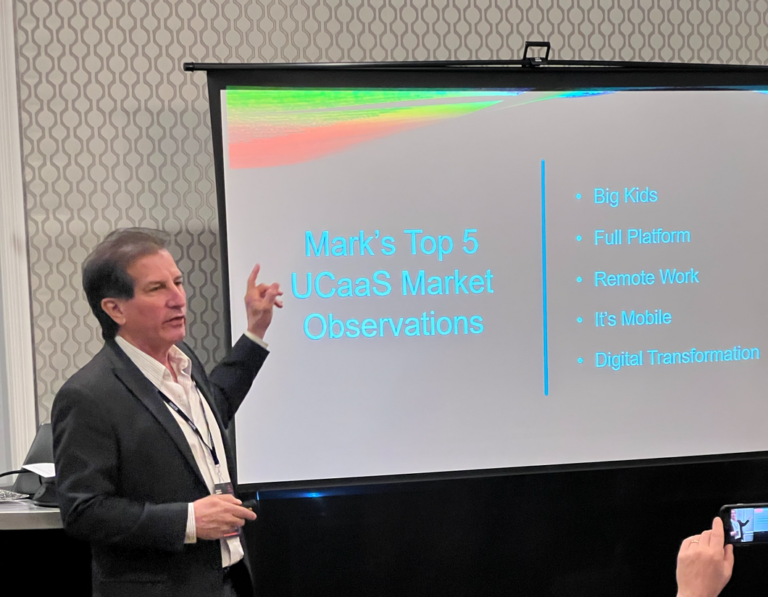
Delighting Users with Flexible Access
Delighting Users with Flexible Access
The panelists say the flexibility gained via cloud-based unified communication resulted in increased user satisfaction by their constituents.
User adoption determines transition success. At the University of Michigan, Patel says integrating the cloud system with employees’ existing devices helped enable flexible work. He quotes, “It’s not like the use of the phone service goes down with a mobile device or laptop. The integrated components make it much easier to develop that.”
Using WebEx, Jason Lepper’s provider TelNet enabled “softphones on mobile devices and computers so staff could make phone calls and work remotely seamlessly using their business phone number.” Issues arose during the rollout but could have been avoided with better training and documentation upfront. Looking back, Lepper wishes they had spent more time helping staff understand how the new system worked before going live.
Thorough testing helps identify issues, while expertise resolves them. Providers must understand unique environments to succeed.
Delighting users involves anticipating needs around flexibility, access, and remote work abilities. Look for a partner who commits to helping you with change management training, documentation, user support, and ongoing adoption efforts – not just features.
A cloud communication transition involves users at every step, from requirements to rollout. A user-centered approach overcomes “muscle memory” issues, configuration challenges, and adoption hurdles to truly transform your organization. Focusing on the human element is just as critical as the technological shift itself.

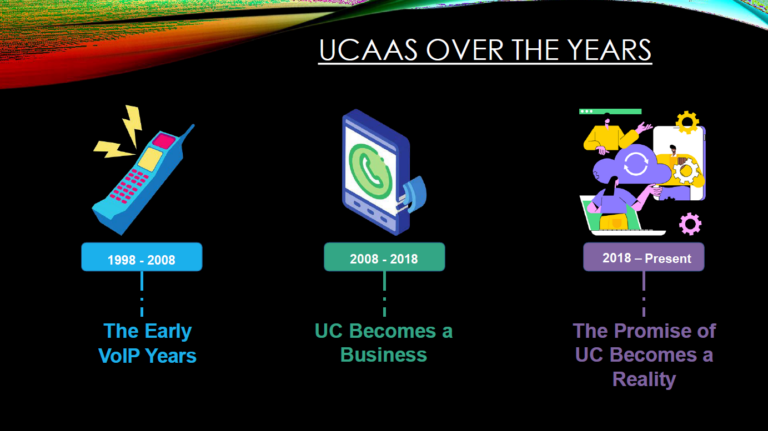
Technical Requirement Gathering and Network Planning
Technical Requirement Gathering and Network Planning
The panelists agree that the technical side of transitioning to the cloud can seem daunting, so thorough evaluation and planning are crucial.
Mapping complex aspects of your current system prepares a smooth migration. At Northeast Michigan Community Health Authority, Dennis Bannon’s organization used “a worksheet to map out our complex system so they could pre-build the new system and swap over smoothly.”
Meeting quality of service, reliability, and mobility requirements presents challenges that demand diligence. But expertise can resolve issues, says Bill Fisher of Ferris State University. “Having a good network monitoring tool is something you need.”
Ensuring 911 capabilities represents a major project in itself. Pradip Patel explains traditional methods but believes “private LTE 5G infrastructure…would allow us to do more” New technologies offer hope but require careful planning and testing.
A cloud communication transition involves network redesign, configuration changes, new security protocols, and potential redundancy to preserve uptime. Look for a partner who helps architect, implement, and manage your unified and business communications platform and network for performance, reliability, and security from day one.
While there may be technical challenges, solving complex problems by breaking them into smaller, more manageable steps (the “divide and conquer” approach) can help. Doing limited initial tests, gradually rolling out the solution, and constantly improving it should be the top priorities. This will help ensure that planning how to use a cloud-based communication system is done carefully.
In short, start small, take it slow, test thoroughly, and keep improving. That is the best way to overcome complexity and successfully implement a cloud communication platform.

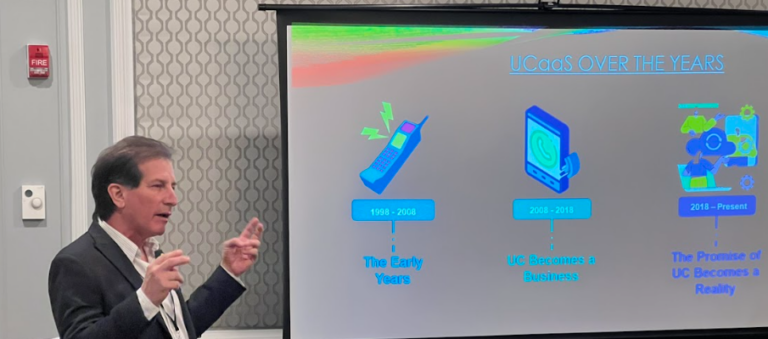
Transitioning Phones Is Just the Beginning
Transitioning Phones Is Just the Beginning
The panelists agree that transitioning phone systems to the cloud is just the beginning of a rewarding, exciting improvement process.
Transitioning to the cloud involves more than just migrating – it’s the beginning of an ongoing process of management, optimization, and refinement.
While cloud platforms promise benefits, successful transitions require careful planning, testing, and evaluation upfront. Bill Fisher notes, “There’s some dilemma every week, you know, some little thing we have to deal with. But that’s what any project is.”
Look for a partner who provides ongoing support long after your transition. As Fisher says, “TelNet support was there when little things came up. They helped troubleshoot and solve issues we wouldn’t have figured out on our own.”
Continuous improvement, monitoring tools, and change management remain essential even post-rollout. As Dennis Bannon explains, “We’re just starting. We’re a small IT group. And by the time we get done with one part, we find a few more things that we really want. The journey is never truly complete.”
Panelists recommend taking simple first steps like evaluating capabilities in RFPs or provider quotes, testing with users, mapping complex aspects, and ensuring support will be available after the transition. These lay the groundwork for future improvements that maximize benefits.
While the initial shift represents a big undertaking, ongoing optimization, and evolution help you realize the full transformational power of cloud communication platforms. Think of your transition as just the beginning – not the end – of unlocking this technology’s potential within your organization.


Prioritizing Strategic Capabilities
Prioritizing Strategic Capabilities
The panelists all agree essential capabilities must be prioritized.
Mobility represented a high priority for Northeast Michigan, enabling staff to work remotely while providing consistent patient services. Staff required flexible devices and softphones to maintain productivity.
Supporting a hybrid environment of on-campus and remote workers also factored in for the University of Michigan. The platform needed to integrate with employees’ devices while accommodating different work modes.
Reliability and uptime prove more important than “bells and whistles” in real-world use. Bill Fisher advises, “You learn what they’re missing through implementation and experience.” He quotes, “You want to look at it as a platform, a configurable set of services.”
Proactively evaluate your top 3-5 requirements to include in RFPs and request demos focused on mapping to your critical needs. Pilot testing reveals essential capabilities your transition plan should optimize around.
By focusing your migration narrative on a narrowed list of transformation priorities aligned with strategic objectives, you set the stage for a successful transition that moves the needle for your organization. Emphasize needs over features to guide your journey.

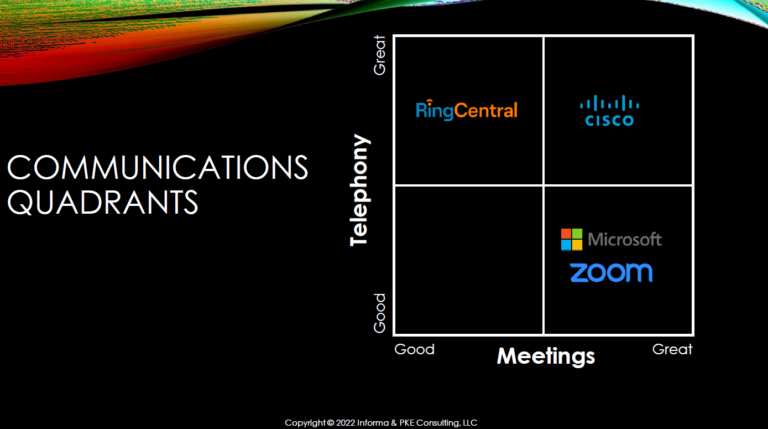
Following the Guidance of Experts
Following the Guidance of Experts
Panelists agree that organizations who approach the transition with guidance from experts have the greatest success.
For the University of Michigan, Zoom provided that level of support through onboarding, communication strategies, and flexible integration options that enabled a successful adoption.
The other panelists highlighted how TelNet Worldwide helped them map out complex requirements using either Microsoft Teams or WebEx platforms. TelNet also helps them troubleshoot issues and configure features to meet their mobility, reliability, and uptime needs. TelNet’s expertise and customer-centric approach eased their journeys to cloud communication platforms.
Choosing a partner that can provide not just technology but transformational guidance tailored to your organization’s unique environments and priorities increases the chances of a smooth transition and fruitful outcomes. The human element – in the form of committed support, change management, and user adoption efforts – often proves as critical as the technological capabilities themselves.
While every organization faces its own mix of technical, operational, and people challenges, the right levels of preparation, expertise, and ongoing optimization can help turn what initially seems like a massive undertaking into a manageable process of iterative improvement.
The journey may take time but can ultimately transform how your business operates – if you start with the right guidance and focus on your most essential requirements.


BONUS... 5 Other Key Take-Aways
5 Other Key Take-Aways
Though complex, the panelists emphasized that transitioning to a unified communication platform should not be put off indefinitely. As Dennis Bannon said, “One of the things that helped us was deciding it was time to look elsewhere. The cloud was obviously the way for us to go.” Other key take-aways from the discussion were:
-
Evaluate your essential features and capabilities to prioritize in an RFP or quote from a provider
-
Conduct pilot testing with key user groups to gauge the ease of use
-
Start making notes on the complex aspects of your current system for a smooth transition
-
Ensure support will be available after the transition to resolve any issues
-
Identify change management strategies upfront to boost user adoption
Though a big undertaking, choosing a provider that brings expertise to guide you through the process can help make the transition without major disruption. These initial steps now get you moving in the right direction to modernize your organization’s communication systems and unlock benefits like efficiency, mobility, and flexibility.


Listen to the complete audio version of this Merit Conference 2023 panel discussion.
Here's a Sample of What Merit Conference 2023 Attendees Saw & Heard at TelNet Worldwide's Panel Discussion
Download a Print Version of the Panel Discussion

Want to Learn More?
To learn more about transitioning your on-premise phone and communication platforms to the cloud, contact a TelNet cloud expert today.



